
Blog
-

ERP Business Central
In today’s fast-paced business world, managing the complexities of your operations efficiently is vital for success. Enterprise Resource Planning (ERP) software has emerged as a crucial tool for businesses of all sizes, offering comprehensive solutions to streamline processes, enhance productivity, and drive growth. One such solution is “ERP Business Central.” In this article, we’ll dive into the world of ERP Business Central, understanding its key features and the advantages it brings to modern businesses.
-

Top ERP System
Top ERP System – In today’s fast-paced business landscape, staying competitive requires more than just ambition; it demands strategic tools and solutions. This is where Enterprise Resource Planning (ERP) systems come into play. In this article, we’ll delve into the world of ERP systems, their significance, how to choose the right one for your business, and explore some real-world success stories that showcase their transformative power.
Introduction to ERP Systems
A. Brief Overview of ERP (Enterprise Resource Planning) Systems Enterprise Resource Planning, commonly known as ERP, is a comprehensive software solution designed to streamline and integrate various business processes and functions. It serves as a centralized hub for managing and optimizing everything from finances and human resources to supply chain management and customer relationship management. The core idea behind ERP systems is to provide a single platform that enables real-time data sharing and collaboration across all departments, improving efficiency and decision-making. B. Significance of ERP Systems in Modern Business In the digital age, businesses are overwhelmed with data and information from multiple sources. ERP systems play a pivotal role in managing this data by providing accurate insights into operations, enabling businesses to make informed decisions promptly. ERP systems also enhance communication and collaboration within organizations, breaking down silos and ensuring that everyone has access to the same data. This not only streamlines operations but also fosters a culture of transparency and accountability.Importance of Choosing the Right ERP System
A. Impact on Business Efficiency and Profitability Selecting the right ERP system can have a profound impact on business efficiency. An effective ERP system automates routine tasks, reduces manual errors, and improves overall productivity. This leads to cost savings and, ultimately, increased profitability. Moreover, by providing real-time visibility into various aspects of the business, ERP systems empower decision-makers to respond quickly to market changes and customer demands, further enhancing competitiveness. B. Long-Term Benefits of an Effective ERP System While the initial investment in an ERP system may seem significant, the long-term benefits far outweigh the costs. Over time, an ERP system can adapt and scale with your business, making it a sustainable solution that grows with you. Furthermore, the data collected and analyzed by ERP systems can uncover valuable insights that drive strategic planning and innovation. This positions businesses to stay ahead of the curve and thrive in an ever-evolving market.To ensure you make an informed choice when selecting an ERP system, consider the following criteria:
A. Key Features and Functionalities Every business is unique, so it’s crucial to identify the specific features and functionalities your organization needs. Make a list of your requirements, such as financial management, inventory control, or customer relationship management, and assess how well each ERP system meets these needs. B. Scalability and Customization Options As your business grows, so should your ERP system. Ensure that the system you choose is scalable and offers customization options to adapt to changing requirements. C. Integration Capabilities Seamless integration with existing software and systems is vital to avoid data silos and maximize the value of your ERP investment. Check if the ERP system can integrate with other tools your business relies on. D. User-Friendliness and Support A user-friendly interface is essential for employee adoption and efficient use of the ERP system. Additionally, consider the level of support and training offered by the ERP provider to ensure a smooth implementation process.Top ERP Systems in the Market
Now that you understand the criteria for evaluation, let’s highlight some of the leading ERP systems in the market: A. SAP ERP SAP ERP is renowned for its robust capabilities in various industries. It offers comprehensive solutions for financial management, supply chain, and analytics, making it a preferred choice for large enterprises. B. Oracle NetSuite Oracle NetSuite is a cloud-based ERP system known for its flexibility and scalability. It caters to businesses of all sizes and provides a wide range of modules, from financials to CRM. C. Microsoft Dynamics 365 Microsoft Dynamics 365 combines ERP and CRM functionalities seamlessly. It’s known for its user-friendly interface and integration with other Microsoft tools, making it a preferred choice for businesses already using Microsoft products. D. Infor CloudSuite Infor CloudSuite offers industry-specific ERP solutions, making it suitable for niche markets. It focuses on enhancing customer experience and streamlining operations.Real-World Success Stories
A. Examples of Businesses Benefiting from Top ERP SystemsCompany X: Streamlining Operations with SAP ERP
Company X, a global manufacturing giant, implemented SAP ERP to centralize its operations. This move allowed them to optimize their supply chain, reduce production costs, and enhance product quality. Within a year, Company X experienced a significant increase in profitability.Startup Y: Scaling Rapidly with Oracle NetSuite
Startup Y, a tech company, chose Oracle NetSuite as its ERP solution. The cloud-based nature of NetSuite allowed them to scale rapidly without the need for extensive IT infrastructure. This flexibility helped them secure new clients and expand their market presence.B. Challenges They Faced and How the ERP Systems Helped Overcome Them
Both Company X and Startup Y faced challenges specific to their industries. Company X struggled with outdated legacy systems that hindered data sharing, while Startup Y needed a solution that could keep up with their rapid growth. SAP ERP and Oracle NetSuite addressed these challenges by providing tailored solutions that improved efficiency and scalability. Company X’s supply chain became more agile, and Startup Y could focus on innovation rather than IT infrastructure. In conclusion, selecting the right ERP system is a critical decision that can shape the future of your business. By considering key criteria and learning from real-world success stories, you can make an informed choice that leads to increased efficiency, profitability, and long-term success. -
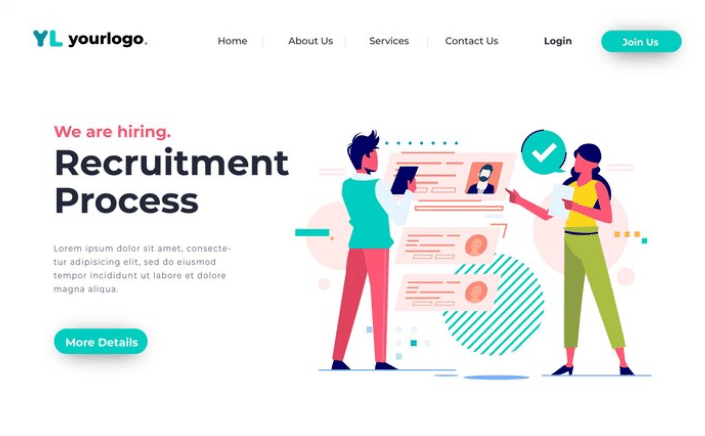
HR Payroll
HR & Payroll Human Resources (HR) and Payroll are two critical functions within any organization, irrespective of its size or industry. HR is responsible for managing the workforce, from recruitment and onboarding to performance management and talent development. On the other hand, Payroll ensures that employees are compensated accurately and timely, while also handling tax compliance and deductions. This comprehensive guide explores the synergy between HR and Payroll, highlighting their integration, functions, software solutions, and the benefits they bring to organizations.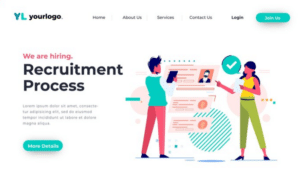
Understanding HR and Payroll
Recruitment and Talent Acquisition
HR professionals are responsible for identifying, attracting, and hiring top talent. They manage the recruitment process, including posting job openings, conducting interviews, and onboarding new hires.Employee Records Management
HR maintains accurate employee records, ensuring that data related to personal information, employment history, and performance evaluations are up-to-date and easily accessible.Performance Management
HR oversees performance evaluations, goal setting, and feedback processes to enhance employee performance and development.Talent Development and Training
HR designs and implements training programs to develop employee skills and promote career growth.Employee Engagement and Surveys
HR measures employee satisfaction and engagement levels, conducting surveys and initiatives to enhance workplace morale and productivity.The Significance of Payroll
Payroll, while closely related to HR, has its distinct responsibilities:Salary Calculation
Payroll calculates employee salaries based on various factors, including hours worked, overtime, and bonuses.Tax Management
Payroll ensures accurate tax calculations, withholdings, and deductions from employee salaries in compliance with tax laws.Benefits and Deductions
Payroll handles employee benefits administration, including health insurance, retirement plans, and deductions for benefits chosen by employees.Compliance and Reporting
Payroll manages compliance with labor laws, tax regulations, and reporting requirements, ensuring timely submissions to government agencies.Direct Deposits and Payslips
Payroll facilitates direct deposits into employees’ bank accounts and generates payslips detailing compensation and deductions.Challenges in HR and Payroll Management
Both HR and Payroll face common challenges, including:- Data Accuracy: Maintaining accurate and up-to-date employee data is crucial for both functions.
- Regulatory Compliance: Staying compliant with ever-changing labor laws and tax regulations is a complex task.
- Efficiency: Manual HR and Payroll processes can be time-consuming and error-prone.
- Data Security: Employee data, including personal and financial information, must be secured against breaches.
The Synergy of HR and Payroll
HR and Payroll Integration
The integration of HR and Payroll functions is becoming increasingly important for organizations. By aligning these two critical areas, organizations can streamline processes, improve data accuracy, and enhance the overall employee experience.Benefits of Integrating HR and Payroll
Integrating HR and Payroll offers several advantages:- Data Consistency: Employee data is synchronized across HR and Payroll systems, reducing errors.
- Efficiency: Streamlined processes save time and reduce administrative overhead.
- Compliance: Integrated systems can help ensure compliance with tax and labor laws.
- Visibility: HR and Payroll teams have a holistic view of employee data, aiding decision-making.
- Employee Self-Service: Integration enables employees to access their pay-related information easily.
Key Functions of HR and Payroll
HR Functions
Recruitment and Onboarding
HR manages the entire employee lifecycle, from hiring to onboarding. This includes posting job openings, conducting interviews, and facilitating the smooth entry of new hires into the organization.Employee Records Management
HR maintains accurate and organized records of employee information, including personal details, job history, performance evaluations, and training records.Performance Management
HR oversees performance appraisal processes, setting goals, conducting evaluations, and providing feedback to employees.Talent Development and Training
HR designs and delivers training programs to develop employee skills and nurture talent within the organization.Employee Engagement and Surveys
HR measures employee satisfaction and engagement levels through surveys and initiatives, working to create a positive workplace culture.Payroll Functions
Salary Calculation
Payroll calculates employee salaries based on hours worked, overtime, bonuses, and other compensation factors.Tax Management
Payroll handles tax calculations, withholdings, and deductions, ensuring compliance with tax laws.Benefits and Deductions
Payroll manages employee benefits, including health insurance, retirement plans, and deductions for benefits chosen by employees.Compliance and Reporting
Payroll ensures compliance with labor laws and tax regulations, generating reports for government agencies and internal use.Direct Deposits and Payslips
Payroll facilitates direct deposits into employee bank accounts and generates payslips detailing compensation and deductions.HR and Payroll Software
Choosing the Right HR and Payroll Software
Selecting the right HR and Payroll software is crucial. Consider factors like scalability, integration capabilities, compliance features, and user-friendliness.Popular HR and Payroll Software Solutions
Some popular HR and Payroll software solutions include:- ADP Workforce Now: A comprehensive HR and Payroll platform with a focus on compliance and scalability.
- Paycom: Offers a single database HR and Payroll solution with self-service capabilities.
- Workday: Known for its cloud-based HR and Payroll software with a strong focus on analytics and reporting.
- Gusto: A user-friendly HR and Payroll software designed for small to medium-sized businesses.
- SAP SuccessFactors: Offers a suite of HR solutions with a global focus and strong talent management features.
The Benefits of HR and Payroll Software
Efficiency and Accuracy
HR and Payroll software streamline processes, reducing manual work and the risk of errors. This leads to increased efficiency and data accuracy.Cost Savings
Automation and efficiency lead to cost savings in terms of reduced administrative overhead and potential penalties for non-compliance.Compliance and Risk Management
HR and Payroll software helps organizations stay compliant with labor laws and tax regulations, reducing the risk of legal issues and fines.Data Security
Modern HR and Payroll software prioritize data security, offering robust encryption and access controls to protect sensitive employee information.Employee Self-Service
Many HR and Payroll software solutions offer self-service portals, allowing employees to access their pay-related information, request time off, and update personal details, reducing HR administrative tasks.Implementation and Integration
Planning for Implementation
Successful implementation of HR and Payroll software requires thorough planning, involving key stakeholders, and defining clear objectives.Data Migration
Migrating existing employee data into the new system is a critical step, ensuring data accuracy and historical information availability.User Training and Adoption
Providing comprehensive training to HR professionals and employees is essential for successful software adoption.Integration with Other Systems
Integrating HR and Payroll software with other systems, such as accounting or time tracking, enhances data consistency and workflow efficiency.HR and Payroll Across Industries
HR and Payroll in Healthcare
In the healthcare industry, HR and Payroll must manage a diverse workforce and adhere to strict compliance requirements, making integration and accuracy crucial.HR and Payroll in Manufacturing
Manufacturing companies rely on HR and Payroll to manage large workforces efficiently, especially regarding time and attendance tracking and compliance.HR and Payroll in Finance
Financial institutions require robust HR and Payroll solutions to handle diverse roles, regulatory compliance, and data security.HR and Payroll in Retail
In the retail sector, HR and Payroll software support employee engagement, scheduling, and compliance.Challenges and Considerations
Integration Challenges
Integrating HR and Payroll software can be complex, requiring careful planning and testing.Data Accuracy and Security
Maintaining data accuracy and security is paramount, given the sensitive nature of employee information.Regulatory Compliance
Staying compliant with labor laws, tax regulations, and reporting requirements is an ongoing challenge.Scalability
HR and Payroll software should scale with an organization’s growth and evolving HR needs.Future Trends in HR and Payroll
Artificial Intelligence and Automation
AI and automation are poised to play a significant role in HR and Payroll, streamlining processes and providing insights.Employee Experience
Enhancing the employee experience through self-service portals and personalized HR services is a growing trend.Cloud-Based Solutions
The adoption of cloud-based HR and Payroll solutions offers flexibility and scalability for organizations.Conclusion
HR and Payroll are the backbone of any organization, working in tandem to manage the workforce and ensure compensation accuracy. The integration of these functions brings efficiency, data accuracy, and compliance benefits. As organizations navigate the evolving landscape of HR and Payroll, choosing the right software, implementing it effectively, and staying attuned to industry trends will be critical to success. The future holds exciting possibilities for HR and Payroll, driven by technology and a focus on improving the employee experience. -
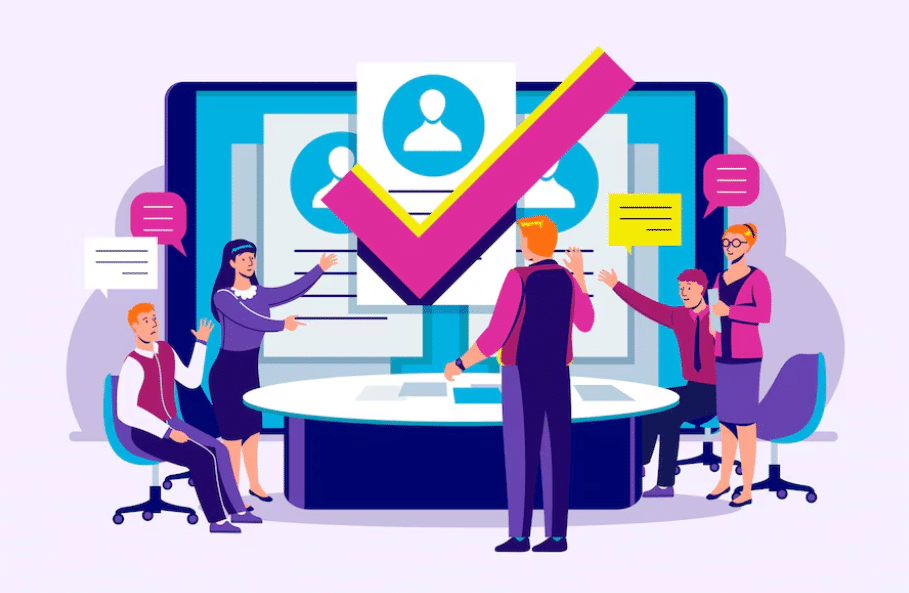
Best HRIS Software
Best HRIS Software Human Resources Information System (HRIS) software has become a cornerstone in the efficient management of human resources within organizations of all sizes. This comprehensive guide explores the world of HRIS software, shedding light on its significance, evolution, key components, benefits, selection criteria, implementation strategies, real-world applications across various industries, challenges, and future trends.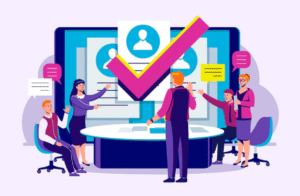
Understanding HRIS Software
The Significance of HRIS
HRIS software is a vital tool designed to streamline HR processes, automate repetitive tasks, centralize employee data, and enhance HR management. It plays a crucial role in managing various HR functions, from recruitment and onboarding to performance management and payroll processing.Challenges in HR Management
Managing human resources can be complex, time-consuming, and resource-intensive, involving challenges such as data management, recruitment, performance evaluation, payroll, training, and compliance with labor laws.Evolution of HRIS Software
Historical Perspective
HRIS software has evolved significantly over the years. Initially, HR processes were paper-based and labor-intensive. The advent of computers in the workplace marked the beginning of the first generation of HR software, simplifying tasks like payroll processing.Modern HRIS Solutions
Contemporary HRIS solutions offer features such as self-service portals, advanced analytics, and cloud-based accessibility. These systems have become integral to HR operations, enhancing efficiency and enabling strategic decision-making.Key Components of HRIS Software
Employee Information Management
HRIS software serves as a central repository for employee data, including personal information, employment history, and performance records.Recruitment and Applicant Tracking
HRIS streamlines the recruitment process, from posting job openings to tracking applicant progress and conducting interviews.Performance Management
HRIS aids in setting performance goals, conducting evaluations, and providing feedback, fostering a culture of continuous improvement.Payroll and Compensation
HRIS software calculates salaries, manages tax compliance, administers benefits, and generates payslips.Learning and Development
HRIS supports training programs, tracks skill development, and facilitates career growth.Benefits of HRIS Software
Efficiency and Productivity
HRIS software automates tasks, reducing administrative workload and boosting overall efficiency.Data Accuracy
Centralized data storage ensures data accuracy and reduces errors in HR processes.Strategic Decision-Making
Advanced analytics in HRIS software provide insights for informed HR strategies and better organizational decision-making.Employee Engagement
HRIS software tools can measure and enhance employee engagement through surveys and feedback mechanisms.Compliance Management
HRIS software helps organizations stay compliant with labor laws and reporting requirements.Selecting the Best HRIS Software
Assessing Organizational Needs
Identifying specific HR pain points and organizational goals is critical for selecting the best HRIS software.Scalability and Integration
Consider whether the HRIS software can scale with organizational growth and integrate seamlessly with existing systems.Usability and User Adoption
Ensure the selected HRIS software is user-friendly and provide training for effective user adoption.Vendor Evaluation
Evaluate HRIS software vendors based on factors such as reputation, customer support, and pricing to make an informed choice.Implementing HRIS Software
Planning and Preparation
Successful HRIS software implementation requires thorough planning, stakeholder involvement, and clear objectives.Data Migration
Migrating existing employee data accurately is crucial to prevent discrepancies and ensure historical information availability.Training and Onboarding
Comprehensive training programs should be designed to help employees and HR professionals adapt to the new HRIS software.Monitoring and Continuous Improvement
Regular monitoring and feedback mechanisms ensure the HRIS software operates optimally and meets evolving needs.HRIS Software in Different Industries
Healthcare
In the healthcare sector, HRIS software helps manage diverse workforces and maintain compliance with stringent regulations.Manufacturing
Manufacturing industries leverage HRIS software for time and attendance tracking, labor cost management, and compliance.Finance
Financial institutions rely on HRIS software for talent management, payroll processing, and regulatory compliance.Technology
Tech companies use HRIS software for efficient HR operations and remote work solutions.Challenges and Considerations
Data Security
Protecting sensitive employee data from breaches is a top priority for organizations implementing HRIS software.Costs and ROI
Organizations must calculate the total cost of ownership and assess the return on investment for HRIS software implementation.Change Management
Addressing employee concerns and promoting buy-in is essential for successful HRIS software adoption.Regulatory Compliance
HRIS software should help organizations stay compliant with ever-changing labor laws and regulations.Future Trends in HRIS Software
Artificial Intelligence and Machine Learning
AI and ML will play a significant role in automating HR tasks and providing predictive insights.Employee Experience
Enhancing the employee experience through personalized HR services will be a key focus in HRIS software development.Remote Work Solutions
HRIS software will continue to support remote work, offering tools for virtual onboarding and collaboration.Conclusion
HRIS software has revolutionized the way organizations manage their human resources. It streamlines processes, enhances data accuracy, and provides insights for strategic decision-making. As HRIS software continues to evolve, organizations that embrace these technologies stand to gain a competitive advantage in the ever-changing landscape of HR management. By addressing challenges, selecting the best HRIS software, and staying attuned to future trends, organizations can maximize the benefits of HRIS software and empower their HR teams to excel in their roles. -

Human Resources Management
Human Resources Management Human Resources Management (HRM) plays a critical role in organizations worldwide, shaping the workplace and ensuring that it aligns with the goals and values of both employees and employers. This comprehensive guide delves into the multifaceted realm of HRM, exploring its historical evolution, contemporary significance, key functions, challenges, best practices, and future prospects.
Evolution of Human Resources Management
Historical Perspective
HRM has evolved significantly over time. It traces its origins to the Industrial Revolution when labor unions and early labor laws emerged to protect workers’ rights. The early 20th century saw the development of HR departments focused on personnel management.Modern HR Management
In the modern era, HRM has transformed into a strategic partner within organizations. It is no longer solely responsible for administrative tasks but actively contributes to shaping organizational strategies and fostering employee well-being.Importance of Human Resources Management
Strategic Partner
HRM acts as a strategic partner by aligning HR strategies with organizational goals. It plays a pivotal role in driving business success by ensuring the right talent is in place to meet strategic objectives.Talent Management
Attracting, retaining, and developing top talent is a core function of HRM. Effective talent management strategies are essential for an organization’s growth and sustainability.Compliance and Risk Management
HRM ensures that organizations comply with labor laws and regulations, mitigating risks associated with non-compliance and legal issues.Employee Engagement
Engaged employees are more productive and satisfied, and HRM plays a vital role in fostering a positive workplace culture that promotes employee engagement and well-being.Key Functions of HR Management
Recruitment and Staffing
HRM oversees the recruitment process, from job postings to candidate interviews and onboarding. It aims to identify and hire the best-fit candidates for open positions.Employee Training and Development
Continuous learning and development opportunities are vital for employee growth and organizational success. HRM designs and implements training programs to enhance employee skills.Performance Management
HRM establishes performance appraisal systems to assess employee performance, set goals, provide feedback, and align individual achievements with organizational objectives.Compensation and Benefits
HRM manages employee compensation, including salary structures, bonuses, and benefits packages. It ensures that compensation is competitive and aligned with industry standards.Employee Relations
HRM plays a crucial role in managing employee relations, addressing conflicts, and promoting a positive workplace environment.Challenges in HR Management
Diversity and Inclusion
HRM faces the challenge of fostering diversity and inclusion in the workplace to ensure equal opportunities for all employees.Employee Mental Health
The well-being of employees, including their mental health, is a growing concern for HRM. It involves addressing stress, burnout, and work-life balance issues.Remote Work Management
The rise of remote work presents HRM with the challenge of effectively managing remote teams, ensuring productivity, and maintaining a sense of belonging among remote employees.Technology Integration
HRM needs to effectively integrate technology into its processes, from HRIS (Human Resources Information System) implementation to leveraging analytics for data-driven decision-making.HR Management Best Practices
Strategic HR Planning
Aligning HR strategies with organizational objectives is a best practice that enables HRM to contribute strategically to the organization’s success.Data-Driven Decision-Making
Leveraging data analytics for HR decisions enhances the accuracy and effectiveness of HR strategies and initiatives.Effective Communication
Clear and transparent communication is essential for HRM to convey policies, changes, and expectations to employees.Employee Well-being Initiatives
Promoting employee well-being through wellness programs, mental health support, and work-life balance initiatives contributes to a healthier, more engaged workforce.The Future of Human Resources Management
Artificial Intelligence and Automation
AI and automation will play a significant role in streamlining HR processes, including recruitment, data analysis, and employee interactions.Workforce Diversity
HRM will continue to focus on creating diverse and inclusive workplaces, recognizing the value of diverse perspectives and backgrounds.Hybrid Work Models
The hybrid work model, combining in-office and remote work, will require HRM to adapt policies and practices to support this evolving work landscape.Sustainability and Corporate Social Responsibility
HRM will be instrumental in promoting sustainability and corporate social responsibility initiatives within organizations, aligning them with employee values.Conclusion
Human Resources Management is at the core of organizations, shaping the workforce, fostering employee engagement, and contributing to strategic success. As the workplace continues to evolve, HRM will play an increasingly pivotal role in addressing emerging challenges and seizing opportunities. By embracing best practices and staying attuned to future trends, HRM professionals can lead their organizations towards a brighter, more inclusive, and prosperous future. -
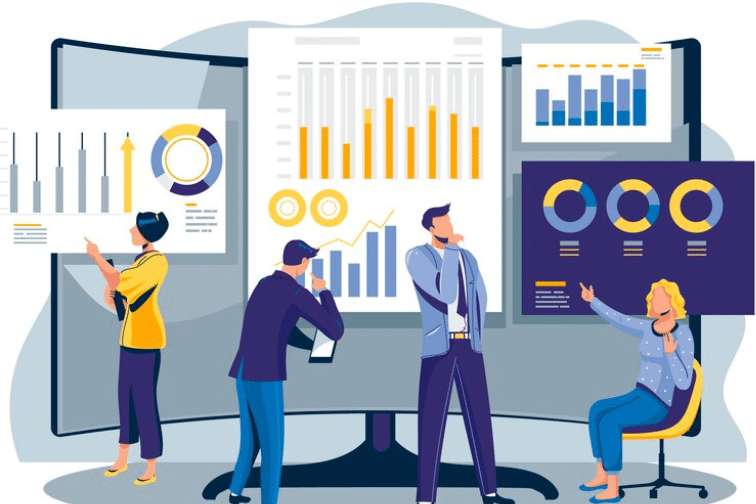
HR Software Solution
HR Software Solution-In the fast-paced world of human resources (HR) management, staying ahead of the curve is essential for organizations aiming to create a dynamic and efficient workforce. HR software solutions have revolutionized the way businesses manage their personnel, from recruitment and onboarding to performance evaluation and talent management. One such innovative HR software solution leading the way is the “Workforce of Tomorrow.” In this comprehensive guide, we will explore the landscape of HR software solutions, dive deep into the features and benefits of the Workforce of Tomorrow, and understand how it empowers organizations to shape the workforce of the future.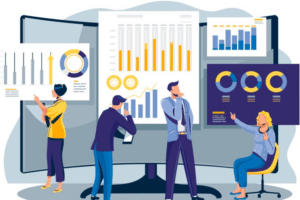
Understanding HR Software Solutions
The Role of HR Software
HR software solutions are specialized tools designed to streamline HR processes, automate administrative tasks, and enhance the overall management of an organization’s workforce. These solutions encompass a wide range of functions, including recruitment, employee data management, payroll processing, performance evaluation, and talent development.Why HR Software Matters
1. Efficiency and Automation
HR software automates repetitive tasks, reducing the administrative burden on HR professionals. This allows HR teams to focus on strategic initiatives and employee engagement.2. Data-Driven Decision-Making
HR software provides real-time access to workforce data and analytics, enabling data-driven decision-making. Organizations can make informed choices about talent acquisition, performance management, and employee development.3. Compliance and Risk Management
HR software solution helps organizations comply with labor laws and regulations, reducing the risk of legal issues and penalties. It also ensures that HR processes adhere to best practices.Challenges in HR Management
HR professionals face numerous challenges, including managing a diverse workforce, adhering to evolving labor laws, and maintaining data security. HR software solutions address these challenges by providing advanced features and capabilities.Introducing the Workforce of Tomorrow
What is the Workforce of Tomorrow?
The Workforce of Tomorrow is an innovative HR software solution designed to empower organizations in shaping a dynamic and future-ready workforce. It is a comprehensive platform that revolutionizes HR management by offering a wide range of features and modules aimed at enhancing every aspect of workforce management.Key Features and Modules
The Workforce of Tomorrow boasts a rich array of features and modules:1. Recruitment and Talent Acquisition
The recruitment module simplifies the hiring process by offering tools for job posting, applicant tracking, and interview scheduling. It also includes AI-driven candidate screening to identify top talent efficiently.2. Employee Onboarding
This module streamlines the onboarding process, allowing organizations to create customized onboarding experiences for new hires. It includes digital document signing, employee training, and orientation programs.3. Performance Management
Performance management tools enable organizations to set performance goals, conduct regular evaluations, and provide feedback to employees. It supports 360-degree feedback and real-time performance tracking.4. Employee Engagement
The employee engagement module includes features for employee surveys, feedback collection, and recognition programs. It helps organizations measure employee satisfaction and create a positive workplace culture.5. Talent Development
Talent development tools assist in identifying employee development needs and creating personalized learning paths. It offers e-learning resources, skill assessment, and career development planning.Advantages of the Workforce of Tomorrow
The Workforce of Tomorrow offers numerous advantages to organizations:1. Comprehensive Solution
It provides an all-in-one solution for HR management, reducing the need for multiple software platforms and simplifying HR operations.2. Enhanced Efficiency
The automation of HR processes saves time and reduces manual errors, improving overall efficiency.3. Data-Driven Insights
Robust analytics and reporting capabilities enable organizations to gain insights into workforce trends and make informed decisions.4. Employee Empowerment
Self-service features empower employees to manage their own HR-related tasks, such as updating personal information and accessing training resources.Core Features of the Workforce of Tomorrow
Let’s explore some of the core features of the Workforce of Tomorrow:Recruitment and Talent Acquisition
The Workforce of Tomorrow streamlines the recruitment process with tools for posting job openings, managing applications, and conducting interviews. It includes AI-driven candidate screening to identify top talent efficiently.Employee Onboarding
This module simplifies the onboarding process, allowing organizations to create customized onboarding experiences for new hires. It includes digital document signing, employee training, and orientation programs.Performance Management
Performance management tools enable organizations to set performance goals, conduct regular evaluations, and provide feedback to employees. It supports 360-degree feedback and real-time performance tracking.Employee Engagement
The employee engagement module includes features for employee surveys, feedback collection, and recognition programs. It helps organizations measure employee satisfaction and create a positive workplace culture.Talent Development
Talent development tools assist in identifying employee development needs and creating personalized learning paths. It offers e-learning resources, skill assessment, and career development planning.Implementing the Workforce of Tomorrow
Implementing the Workforce of Tomorrow requires careful planning and execution. Here are some key considerations:Customization and Integration
Customize the Workforce of Tomorrow to align with your organization’s specific HR processes and requirements. Ensure seamless integration with existing systems, such as Enterprise Resource Planning (ERP) software or third-party applications.User Training and Support
Provide comprehensive training to HR professionals and employees who will be using the system. The Workforce of Tomorrow offers training resources and support to ensure a smooth transition.Data Migration
Migrating existing employee data into the Workforce of Tomorrow is a critical step. Data migration must be executed accurately to prevent data discrepancies and ensure that historical information is readily available.Workforce of Tomorrow Across Industries
The Workforce of Tomorrow is a versatile solution that caters to various industries. Let’s explore how it can benefit specific sectors:Workforce of Tomorrow in Technology
In the technology industry, where talent acquisition and retention are critical, the Workforce of Tomorrow streamlines recruitment processes, supports continuous learning, and enhances employee engagement.Workforce of Tomorrow in Healthcare
Healthcare organizations rely on a skilled and well-managed workforce. The Workforce of Tomorrow ensures compliance with healthcare regulations, simplifies credentialing, and supports ongoing training for healthcare professionals.Workforce of Tomorrow in Retail
Retail businesses with diverse workforces can benefit from the Workforce of Tomorrow’s employee engagement and performance management features. It helps create a positive shopping experience for customers.Challenges and Considerations
While the Workforce of Tomorrow offers numerous benefits, organizations should be aware of potential challenges and considerations:Data Security
HR systems contain sensitive employee data. Ensuring robust data security measures, including encryption and access controls, is critical to protect against data breaches.Scalability
As your organization grows, the Workforce of Tomorrow should scale accordingly. Evaluate whether the system can accommodate an increasing number of employees and changing HR needs.User Adoption
Encouraging employees and HR professionals to embrace the new system is essential for successful implementation. Provide training and support to ensure user adoption.Conclusion
The Workforce of Tomorrow represents a paradigm shift in HR software solutions, offering a comprehensive and user-centric approach to workforce management. With features spanning recruitment, onboarding, performance management, employee engagement, and talent development, it empowers organizations to shape the workforce of the future. By carefully customizing, integrating, and implementing the Workforce of Tomorrow, businesses can enhance HR efficiency, drive employee engagement, and position themselves for success in an ever-evolving world of work.